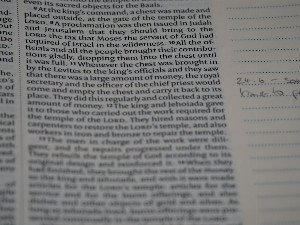Jeanni Imas Rachmawati, Merry Andriani
Pola Umum Wacana Berita Duka Berbahasa Prancis dan Berbahasa Indonesia
Introduction
Pola umum wacana berita duka berbahasa prancis dan berbahasa indonesia. Studi ini menganalisis pola umum wacana berita duka Prancis & Indonesia. Temukan perbedaan struktur wajib & variasi budaya dalam menyampaikan informasi kematian.
Abstract
This study analyzes the general pattern of discourse of French and Indonesian death notices. The researcher used 20 death notices consisting of 10 French death notices and 10 Indonesian death notices obtained from the internet. This research is a mixed research which is qualitative-descriptive and quantitative. The data collection technique used listening and note-taking technique. Meanwhile, the data analysis was carried out using the theory of genre analysis according to Swales and the category of the percentage of occurrence of moves that compose each death notices according to Pho. Based on the results, it is found that there are three obligatory moves which are also the general pattern of French death notices namely 7-3-4; Showing the Mourner, Providing Explanation, and Showing the Profile of the Deceased. On the other hand, only two obligatory moves were found to be the common pattern of Indonesian death notices namely 3-4; Giving Explanation, Showing the Profile of the Deceased. Understanding the pattern of death notices.is one of the methods to explore a culture because it can be seen how a cultural variation organizes and presents information.
Review
This study, "Pola Umum Wacana Berita Duka Berbahasa Prancis dan Berbahasa Indonesia," presents an intriguing comparative analysis of the discourse patterns in French and Indonesian death notices. Utilizing a mixed-methods approach that combines qualitative-descriptive analysis with quantitative insights based on Swales' genre analysis and Pho's move categories, the research successfully identifies distinct obligatory moves within each language. The key findings reveal three consistent obligatory moves for French death notices (7-3-4: Showing the Mourner, Providing Explanation, and Showing the Profile of the Deceased) versus two for Indonesian notices (3-4: Giving Explanation, Showing the Profile of the Deceased). The paper posits that understanding these patterns offers valuable insights into cultural variations in information organization and presentation, making it a relevant contribution to cross-cultural discourse studies. The strength of this research lies in its well-defined theoretical framework and methodological rigor. The application of Swales' genre analysis, complemented by Pho's specific categorization of moves, provides a robust analytical lens for examining the structural components of death notices. The mixed-methods design is particularly commendable, as it allows for both a detailed qualitative description of discourse elements and a quantitative assessment of their prevalence, lending empirical weight to the identified patterns. The clear articulation of the different obligatory moves for French and Indonesian notices is a significant outcome, effectively highlighting how cultural nuances can manifest in seemingly standardized communicative events. Furthermore, the concluding assertion that such analysis serves as a window into cultural understanding is well-justified and underscores the broader implications of the study. While the study offers valuable insights, there are a few areas that could be strengthened or further elaborated. The sample size of 10 death notices per language, while sufficient for exploratory analysis, might be considered somewhat limited for definitively establishing "general patterns" of discourse. A larger corpus could provide greater statistical power and enhance the generalizability of the quantitative findings. Additionally, specifying the exact sources from which the "internet" data was obtained (e.g., specific newspapers, funeral home websites) would improve transparency and allow for a better assessment of the data's representativeness. Finally, while the abstract briefly touches upon cultural implications, a deeper discussion within the paper about *how* the identified differences in discourse moves specifically reflect broader French and Indonesian cultural values surrounding death, grief, and public communication would enrich the analysis and further solidify the study's contribution to cultural understanding. These considerations notwithstanding, this research provides a solid foundation for future, perhaps larger-scale, comparative genre analyses.
Full Text
You need to be logged in to view the full text and Download file of this article - Pola Umum Wacana Berita Duka Berbahasa Prancis dan Berbahasa Indonesia from Lingua Litteria Journal .
Login to View Full Text And DownloadComments
You need to be logged in to post a comment.
Top Blogs by Rating
Unlocking Life's Source Code:...
By Sciaria
Is Electro Music the New Class...
By Sciaria
The Healing Power of "Ahhh": M...
By Sciaria
Favorite Blog
'Um' Isn't Just a Stumble: Wha...
By Sciaria
The Data Diet: What Big Data *...
By Sciaria
Beyond the Stereotype: Unpacki...
By Sciaria





